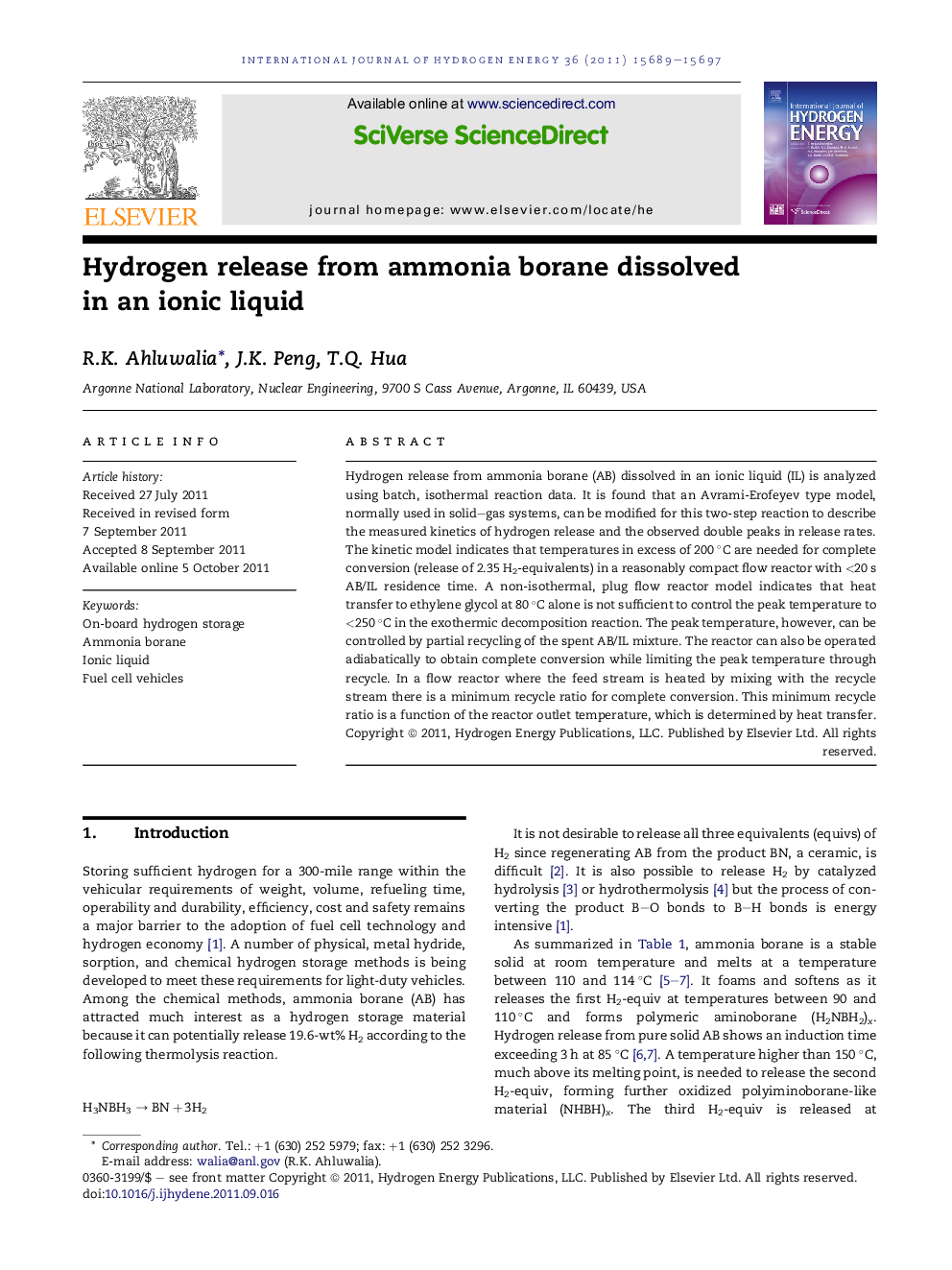| Article ID | Journal | Published Year | Pages | File Type |
|---|---|---|---|---|
| 1277367 | International Journal of Hydrogen Energy | 2011 | 9 Pages |
Hydrogen release from ammonia borane (AB) dissolved in an ionic liquid (IL) is analyzed using batch, isothermal reaction data. It is found that an Avrami-Erofeyev type model, normally used in solid–gas systems, can be modified for this two-step reaction to describe the measured kinetics of hydrogen release and the observed double peaks in release rates. The kinetic model indicates that temperatures in excess of 200 °C are needed for complete conversion (release of 2.35 H2-equivalents) in a reasonably compact flow reactor with <20 s AB/IL residence time. A non-isothermal, plug flow reactor model indicates that heat transfer to ethylene glycol at 80 °C alone is not sufficient to control the peak temperature to <250 °C in the exothermic decomposition reaction. The peak temperature, however, can be controlled by partial recycling of the spent AB/IL mixture. The reactor can also be operated adiabatically to obtain complete conversion while limiting the peak temperature through recycle. In a flow reactor where the feed stream is heated by mixing with the recycle stream there is a minimum recycle ratio for complete conversion. This minimum recycle ratio is a function of the reactor outlet temperature, which is determined by heat transfer.
► On-board hydrogen storage using ammonia borane in ionic liquid. ► Dehydrogenation kinetics data fitted to an Avrami-Erofeyev type model. ► Temperatures in excess of 200 °C are needed for complete conversion. ► The peak temperature can be controlled by partial recycling of the spent AB–IL mixture. ► There is a minimum recycle ratio for complete conversion of AB.
